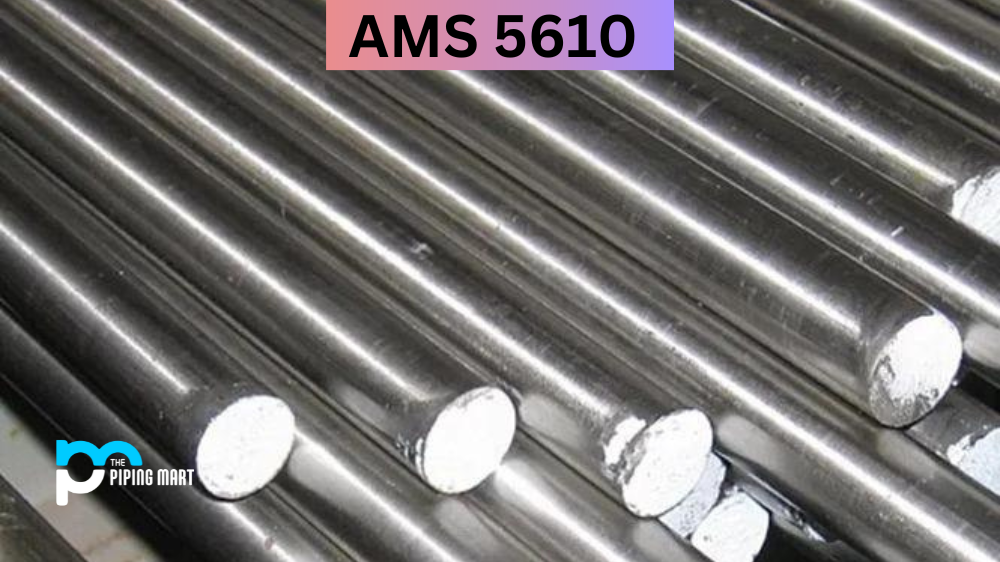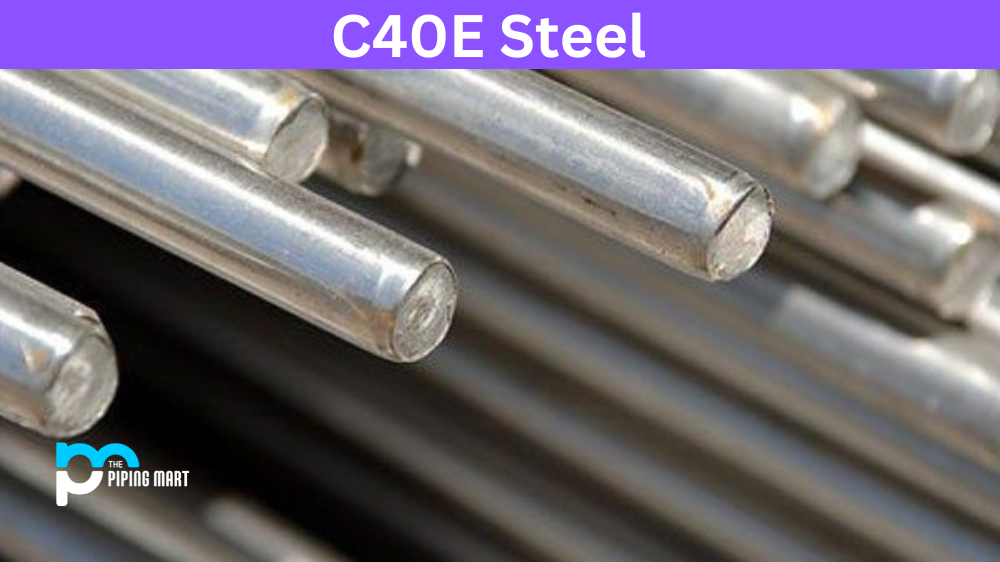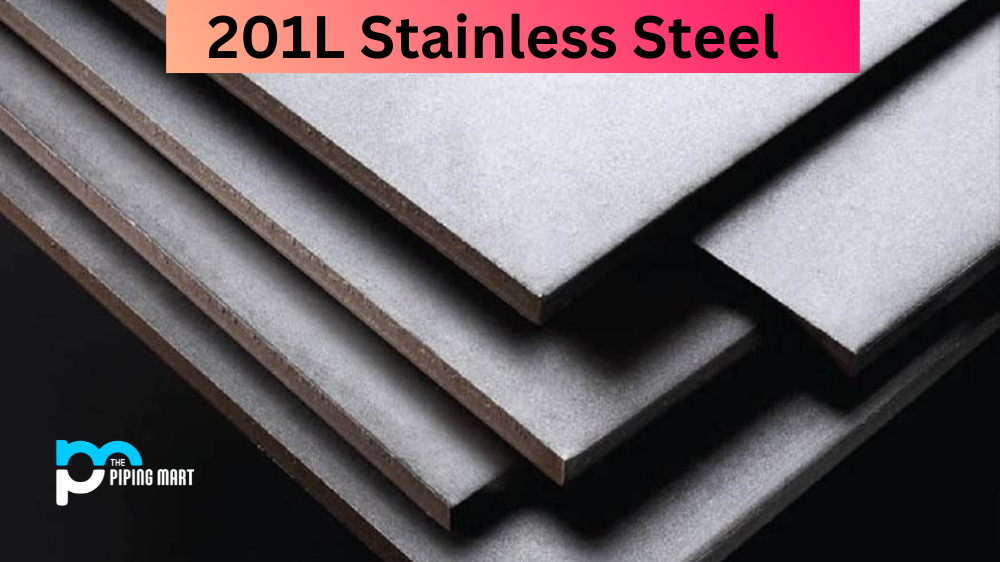Are you in the engineering or manufacturing industry? Have you heard of AMS 5610? If not, don’t worry, as we’re here to educate you on this material. AMS 5610 is a type of stainless steel commonly used in various industrial applications. It has excellent corrosion resistance, especially in high-temperature environments. In this post, we will dive deep into the properties and uses of AMS 5610.
What is AMS 5610?
AMS 5610 (also known as 416 Stainless Steel) is a specific type of stainless steel grade designed to withstand high temperature and pressure situations. It is often used in various challenging environments, including the aerospace and aviation industries. The unique composition of this stainless steel grade makes it exceptionally resistant to corrosion and wear, which makes it a popular choice for critical components that need to maintain their integrity even in the most extreme situations. AMS5610 is a testament to the ingenuity of materials science. Its versatility and durability make it an invaluable tool for engineers and scientists pushing the boundaries of what is possible. With its impressive array of properties, it is no wonder why AMS5610 is one of the most sought-after stainless steel grades on the market today.
What Form Is AMS 5610 Available at Piping Mart?
- Nuts
- Bolts
- Pipes
- Screws
- Stud Bolts
- ERW Pipes
- Fasteners
- Electrodes
- Sheets Plates
- Tubing
AMS 5610 Composition
AMS 5610 is a type of martensitic stainless steel alloy containing iron, carbon, and at least 10.5% chromium. Adding other elements, such as nickel and molybdenum, enhances its mechanical properties. AMS 5610 also contains small amounts of sulfur and phosphorus, which can affect its machinability.
|
Grade |
C |
Mn |
Si |
P |
S |
Cr |
Mo |
|
|
AMS 5610 |
min. max. |
– 0.15 |
– 1.25 |
– 1 |
– 0.06 |
0.15 – |
12 14 |
– 0.6 |
AMS 5610 Physical Properties
AMS 5610 has a density of 7.8 g/cm3 and a melting point of 1450-1500°C. It has a maximum operating temperature of around 870°C. At this temperature, it retains excellent strength and flexibility. It has a thermal expansion coefficient of 11.2 x 10-6 /°C.
|
Grade |
Density (kg/m3) |
Elastic Modulus (GPa) |
Mean Coefficient of Thermal Expansion |
Thermal Conductivity |
Specific Heat 0-100°C |
Electrical Resistivity (nΩ.m) |
|||
|
0-100°C |
0-315°C |
0-538°C |
at 100°C |
at 500°C |
|||||
|
AMS 5610 |
7800 |
200 |
9.9 |
11 |
11.5 |
24.9 |
28.7 |
460 |
570 |
AMS 5610 Mechanical Properties
AMS 5610 has excellent mechanical properties compared to other types of stainless steel. It has a high tensile strength of up to 1500 MPa and a yield strength of up to 1300 MPa. It also has good toughness, which is the ability to resist fracture under stress and withstand high-impact loads. The elongation of this material can range from 10% to 20%, depending on the heat treatment process.
|
Tempering Temperature (°C) |
Tensile Strength (MPa) |
Yield Strength |
Elongation |
Hardness Brinell |
Impact Charpy V (J) |
|
Annealed * |
517 |
275 |
30 |
262 |
– |
|
Condition T ** |
758 |
586 |
18 |
248-302 |
– |
|
204 |
1340 |
1050 |
11 |
388 |
20 |
|
316 |
1350 |
1060 |
12 |
388 |
22 |
|
427 |
1405 |
1110 |
11 |
401 |
# |
|
538 |
1000 |
795 |
13 |
321 |
# |
|
593 |
840 |
705 |
19 |
248 |
27 |
|
650 |
796 |
670 |
17.5 |
253 |
38 |
AMS 5610 Uses
AMS 5610 is commonly used in the aerospace, automotive, and tooling industries. Its high strength and corrosion resistance makes it perfect for application in harsh and demanding environments. It is used in manufacturing turbine blades, aircraft engine components, bearings, gears, pumps, and valves. It also produces industrial cutting tools such as drills, taps, and machining inserts.
AMS 5610 Hardness
AMS 5610 can be heat-treated to achieve high hardness. The material can be quenched and tempered to increase its strength and hardness. It can reach a minimum surface hardness of 51 HRC (Rockwell C Scale). These heat treatment processes also enhance the material’s wear and corrosion resistance.
AMS 5610 Heat Treatment
AMS 5610 can be hardened by heat treatment, such as quenching, tempering, and annealing. Quenching involves rapidly cooling the material from a high temperature to room temperature to achieve maximum hardness. Tempering involves heating the quenched material to a lower temperature to reduce brittleness and improve toughness. Annealing involves heating the material to a specific temperature and holding it for a predetermined time before slowly cooling it to room temperature to attain desired properties.
Conclusion:
AMS 5610 material has become an essential material in the manufacturing and engineering industries thanks to its excellent mechanical and chemical properties. Its high strength, corrosion resistance, and hardness make it ideal for harsh and demanding environments. With proper heat treatment, it can attain superior properties that suit a wide range of applications. This informative post has taught you about AMS 5610 and how it can benefit your industry.

A passionate metal industry expert and blogger. With over 5 years of experience in the field, Palak brings a wealth of knowledge and insight to her writing. Whether discussing the latest trends in the metal industry or sharing tips, she is dedicated to helping others succeed in the metal industry.




